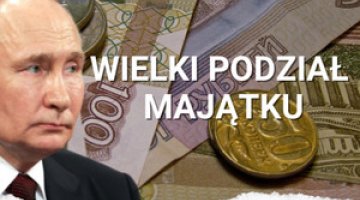Alrosa – a pilot privatisation in Russia
A minority stake in Alrosa, a diamond mining potentate (with an approximately 30% share in global production) was privatised on 6–8 July. The 10.9% package was sold for 52.2 billion rubles (around US$816 million) as part of a record fast secondary public offering. According to official information, the number of offers placed by investors was much higher than the number of shares available, and the greatest interest was shown by Russian and European investors – they may acquire 35% of all privatised shares, 25% will most likely be sold to investors from Asia and the Middle East, and 5% to American investors (however, it is unclear what proportion of the offers has in fact been placed by Russian capital). The share price (65 rubles) turned out to be several per cent lower than previous stock market prices.
Commentary
- Even though the privatisation of Alrosa has been the largest transaction of this kind since 2013, the income generated by it is only a small part of the sum the government would like to receive from privatisation in 2016–2017 (in total, it hopes to get between 1 and 1.5 trillion rubles, i.e. US$15–23 billion). It is still unclear what the precise timescale and conditions will be of the partial privatisation of other state-owned companies: Rosneft (up to 19.5% of shares), Vneshtorgbank (10.9%) , Bashneft (50%) and Sovcomflot (up to 25%). It is important to note that Western sanctions have been imposed on Rosneft and Vneshtorgbank.
- The privatisation announced by the government is on a scale which significantly exceeds the one provided for in the budget for 2016 (slightly over 30 billion rubles) and has been forced on the government by the crisis in public finances. It may be one of the sources for financing the budget deficit this year and the next two to three years. In the first six months of 2016, the deficit exceeded 4% (the level set in the budget being 3%, and the one actually planned by the Ministry of Finance being 3.3%). Other possible sources for plugging the budget gap include: cutting budget spending (according to the current plan, it could go down by as much as 20% in real terms in 2017–2019), spending money from reserve funds in 2016–2019, and domestic loans (as much as 1.5 trillion rubles annually over the next three years).
- The privatisation of Alrosa was most likely aimed at gauging the appetite of foreign investors for Russian assets – a similar goal was apparently set in the case of the issue of Russian Treasury Eurobonds worth US$1.75 billion in May this year. The price at which the Alrosa shares were sold might be viewed as a disturbing signal. It has proved that the company’s market value fell by around 6% when compared to the average value of its capitalisation in the first half of 2016. Proof of dissatisfaction with the outcome of Alrosa’s partial privatisation include the announcements made by the government on 11 and 12 July that it would withdraw from sale of Rosneft’s shares on the stock market and instead sell them directly to a strategic investor (the government believes that a similar scenario would be desirable in the case of Bashneft) and that Vneshtorgbank’s privatisation would be postponed until 2017. This proves that the government fears that a hasty sale of shares on the stock market, given the unstable oil prices, uncertain situation on international financial markets and the continuation of Western sanctions, might produce a much lower yield than initially expected.





